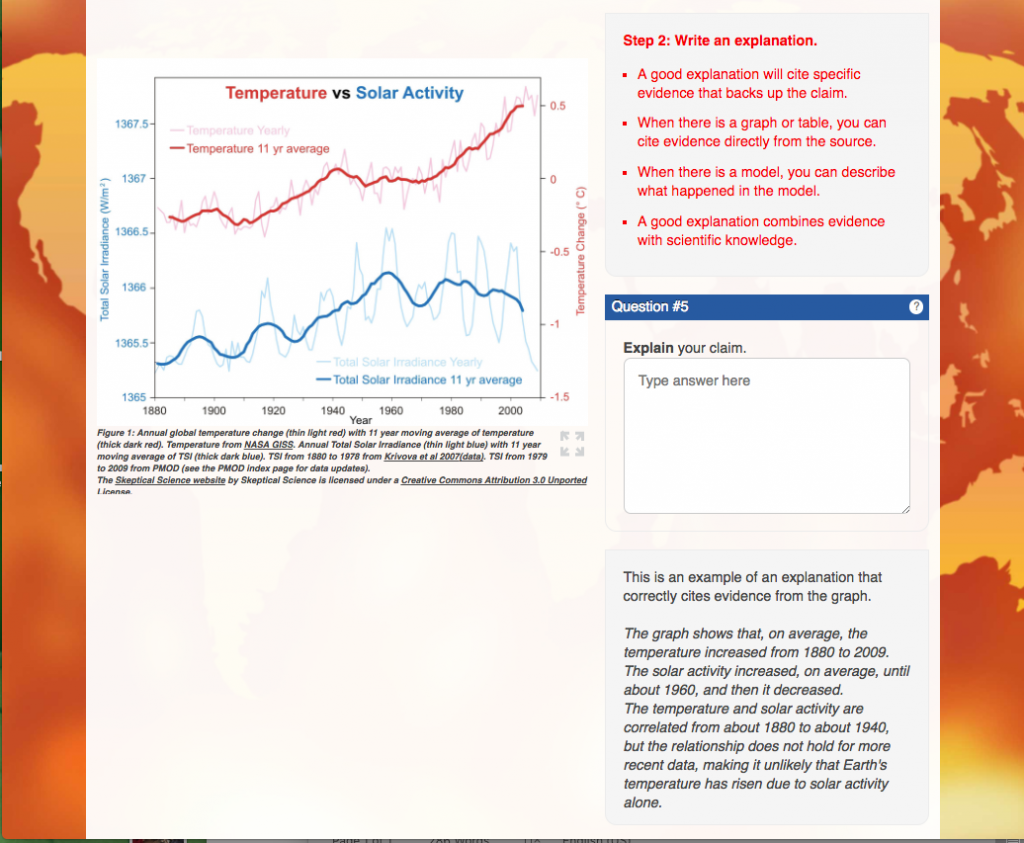Following the recommendation to incorporate the Next Generation Science Standards (NGSS) science and engineering practices in their classrooms, schools across the country are looking for ways to integrate scientific argumentation into their curriculum. Since 2012 the High-Adventure Science project in collaboration with National Geographic Education has offered free online modules for Earth and space science topics—including climate change, freshwater availability, the future of energy sources, air quality, land management, and the search for life in the universe—that include multiple opportunities for students to engage in argument from evidence.
Over 67,000 teachers and students across the globe have used High-Adventure Science modules. Based on teacher feedback, classroom observations, and analysis of student data, we have learned that when students engage in argumentation from data and model-based evidence, they need a lot of support on how to write a convincing argument.
Last year, we added an introductory activity to each module where students learn about the component parts of a scientific argument before they are asked to write one. In this highly scaffolded task, students see written examples of a claim and explanation and learn about uncertainty in scientific data and how to express this uncertainty. In High-Adventure Science, argumentation takes a special form, including a multiple-choice structured claim, open-ended explanation, five-point Likert scale uncertainty rating, and uncertainty rationale.

In this introductory activity, students learn about the components of a good explanation.
Even with this new activity, some students still struggled, so we recently created an animated video to introduce the scientific practice of developing an argument. We start by helping students identify the difference between a scientific argument and so-called “arguments” they may have with their friends (e.g., arguing about favorite ice cream flavors!), and making the distinction between claims backed by evidence and opinion. The goal is to introduce students to scientific arguments in a fun and relatable way and to make the terminology and process of scientific argumentation less daunting.
We’re piloting the video in our Will there be enough fresh water? module for select students. We’re looking forward to student and teacher feedback and may revise the video based on their comments. We want everyone to be able to engage in the critical practice of arguing from evidence.
We welcome your comments about our video, as well as your challenges and successes with incorporating the NGSS practice of engaging in argument from evidence.